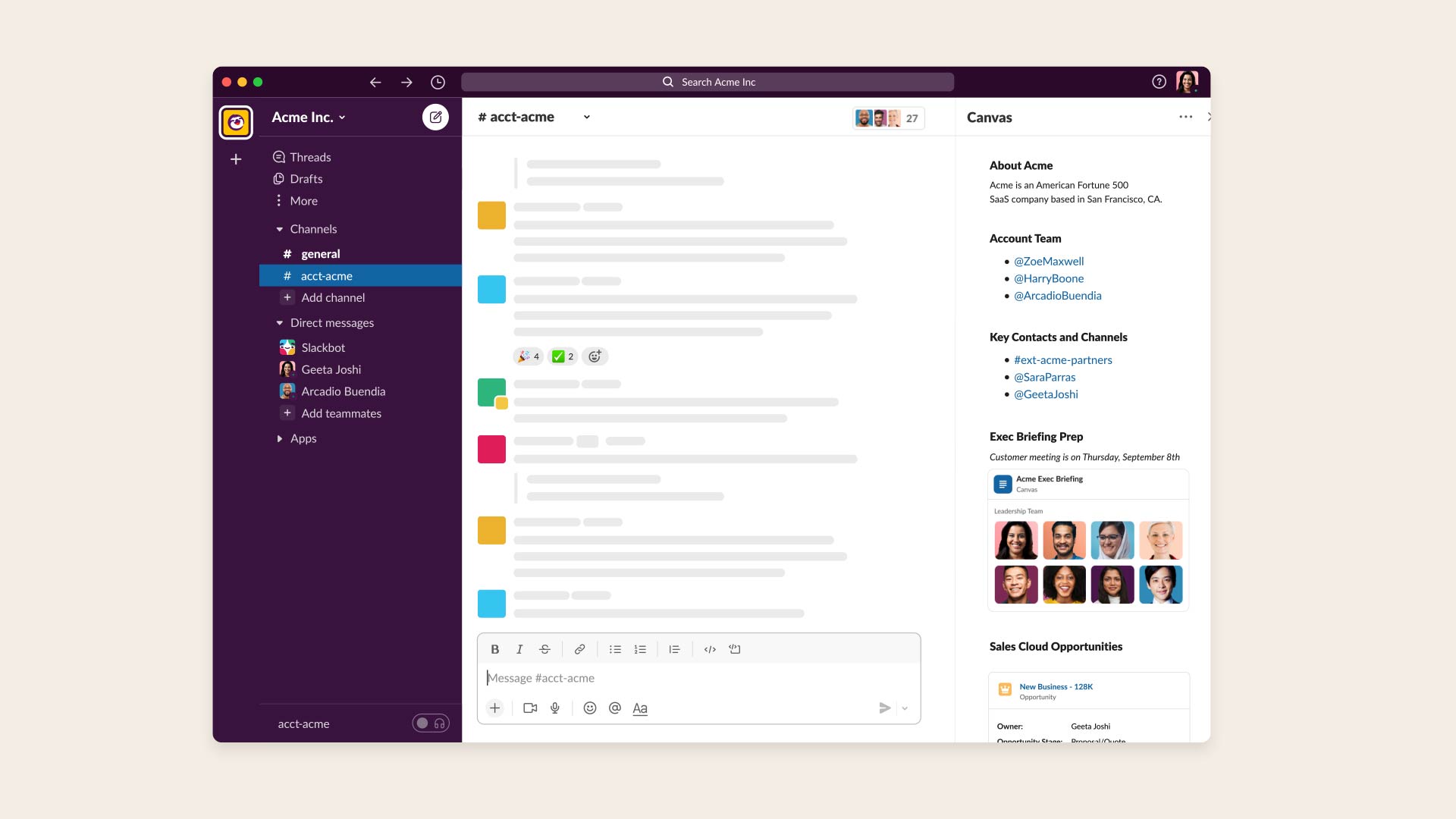Slack has succeeded in large part in the enterprise by allowing people to communicate in a number of ways while integrating with many common enterprise applications. This lets you stay in Slack to get your work done without dreaded task switching. But what Slack has lacked until now was a way to share information about a project in a persistent way.
If you wanted to find the content related to a project, you might start a channel to narrow it down, and share some documents, links and other information, but to find them again requires searching or a lot of scrolling. Slack recognized this limitation and decided to combine Quip’s collaborative tooling with Slack’s communication capabilities in a new tool Slack is calling Canvas.
Quip is the company that Salesforce bought in 2016 for $750 million (and which brought co-CEO Bret Taylor to the company). Salesforce has always seemed to struggle with how to make good use of Quip across the platform. With Slack, the company it bought in 2020 for almost $28 billion, it’s found a way to solve the persistent content problem.
Slack CPO Tamar Yehoshua describes it this way to TechCrunch: “Canvas is taking the collaborative components of Quip and integrating them natively into Slack. It’s a persistent layer of information that is a complement to the real-time nature of channels.”
For companies that do the majority of their work in Slack, and rely on it to share information, Canvas can be a kind of missing link to help people find the information they need much faster. It sits alongside a channel’s conversation stream and gives people access to information such as data and charts, text, tasks, internal and external links, training videos and so forth.
“So you have a channel with the real-time nature of the information that’s flowing and then you can have a persistent layer where you can find things very easily,” she said.

Image Credits: Slack
You also can include workflows you create in Slack, and add those in the form of buttons into the canvas, and you can add comment threads just as you can with Quip. “So all of the functionality that you have in threads in Slack you have for comments in your canvas,” she explained.
Early customers have used it for new employee onboarding and marketing campaigns, as a couple of examples.
In addition to Canvas, Slack announced it enhanced Huddles, the tool for quick audio-based meetings with video capabilities for those users who want it. Slack is also opening up the Slack platform, a way for developers to build modular and reusable building blocks in Slack to create more customized workflows. That is going from private to public beta this week.
Slack Canvas is being announced today at Dreamforce in San Francisco, and is expected to be generally available some time next year.
